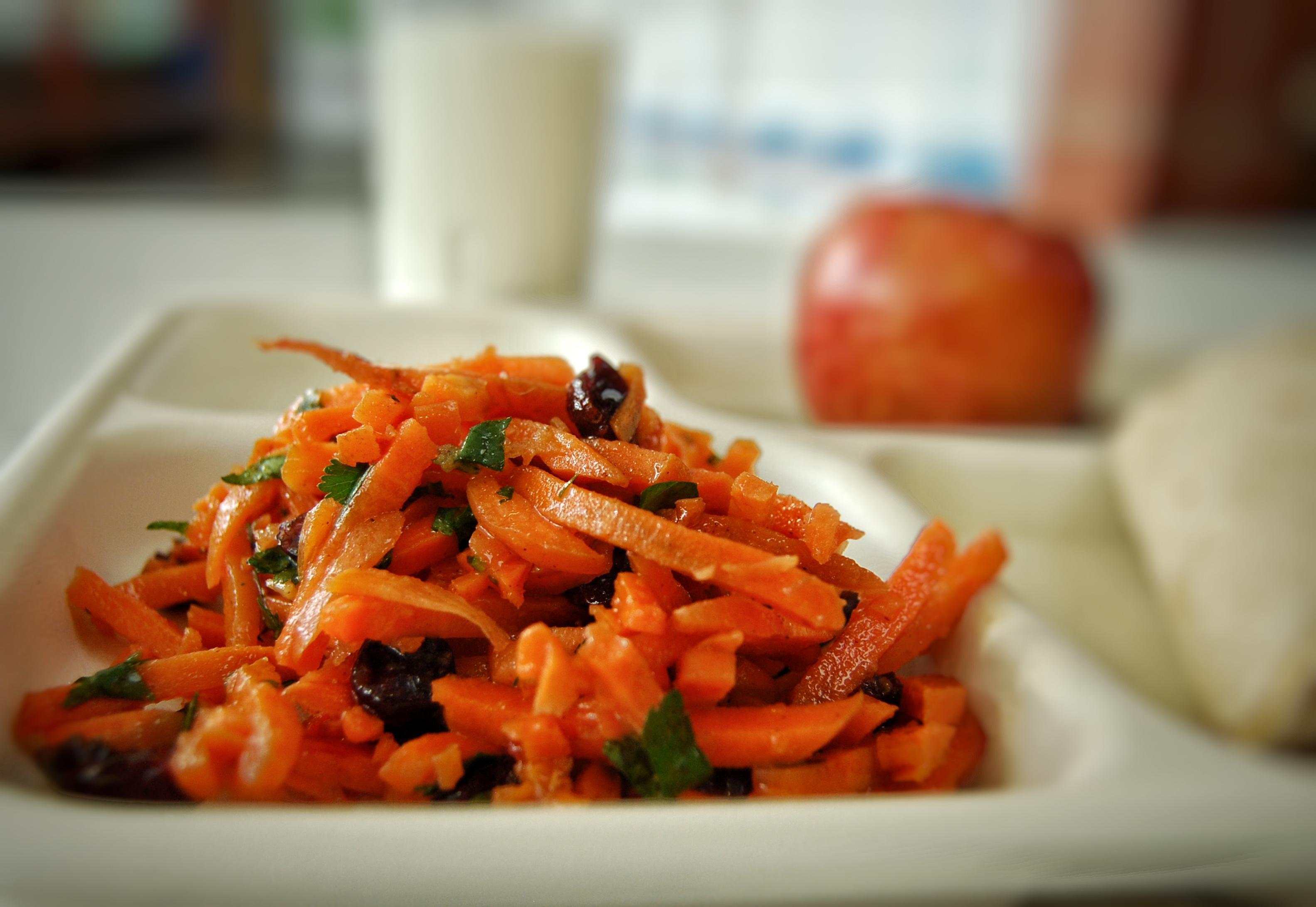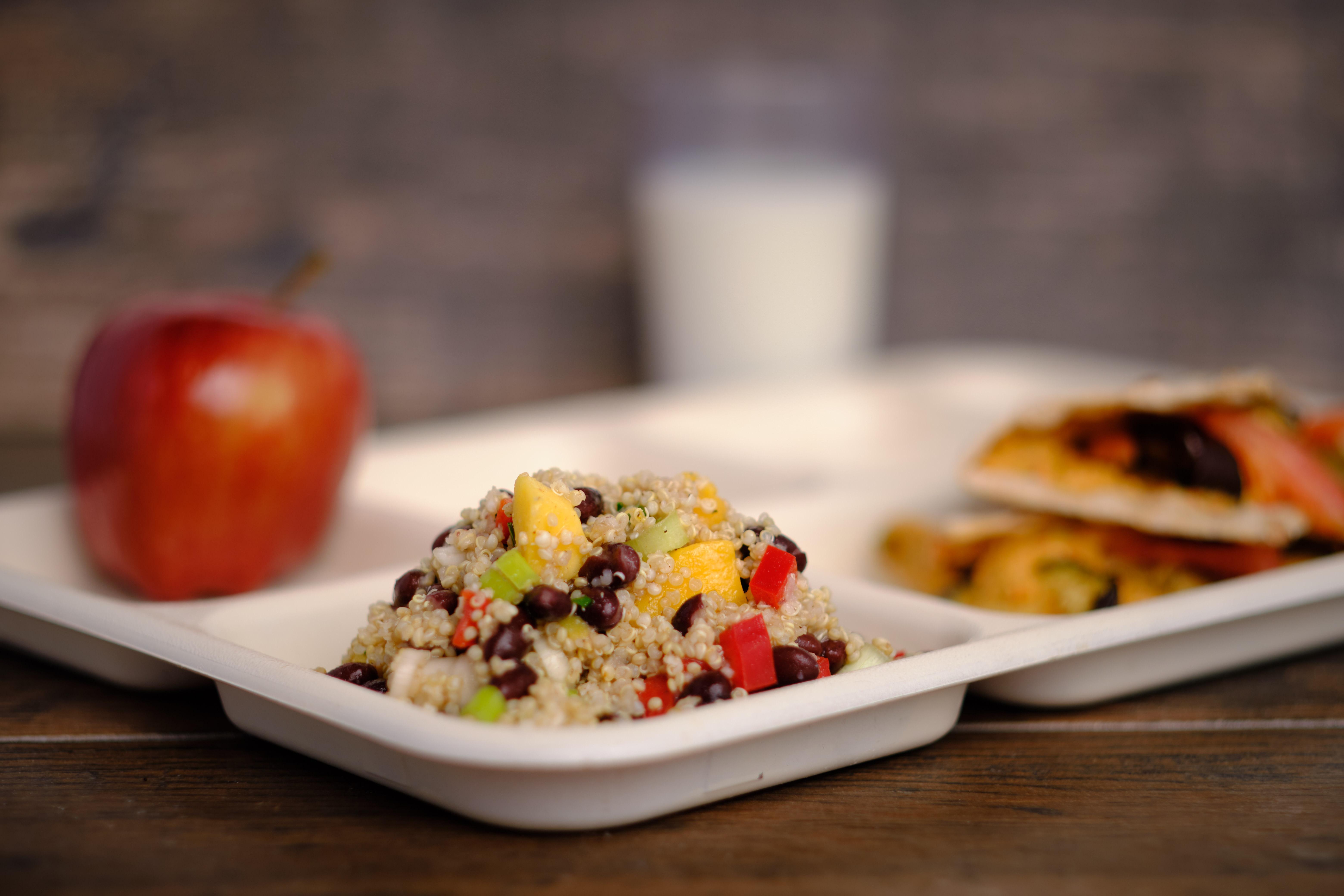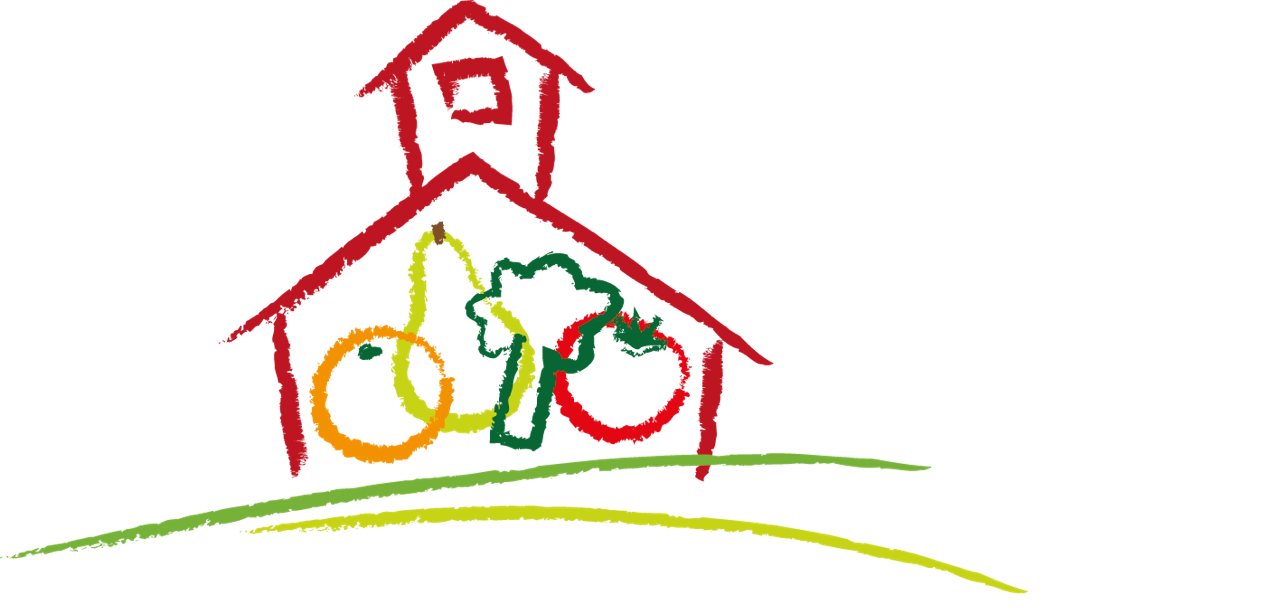Keeping it Fresh with Chef Brandy Dreibelbis
How to Get Creative Serving Fresh Produce During COVID
Due to the pandemic, school food programs have not been able to utilize their salad bars in their normal capacity and may be looking for other creative ways to serve fresh fruits and vegetables. We sat down to discuss this topic with Chef Brandy Dreibelbis, current Director of School Food Operations at the Chef Ann Foundation and former Director of Food Services for NOSH at Napa Valley Unified School District in Napa, CA. Read this Q&A to hear from Brandy’s expertise and discover different tactics for your own school food program!
One of the most beneficial aspects of having a salad bar as part of a school food program is the variety it offers students. How can programs continue to offer such variety without being able to utilize salad bars?
Salad bars increase access to fresh fruits and vegetables for kids. Just because we are not able to use them right now doesn’t mean there aren’t creative ways to be serving these fruits and vegetables. If a school district is serving in-person, they could incorporate more vegetables or fruits into side dishes, such as our Morrocan Carrot Salad and Tomato Cucumber Salad.

Districts that are serving to-go style for remote learning programs can include more whole fresh fruits and vegetables in their food boxes for distribution. By offering more fruit and vegetable options, kids are encouraged to try a larger variety of foods they may not have tried before.
What can school districts do to keep students engaged in nutrition education and learn the benefits of eating fruits and vegetables? How might programs such as Harvest of the Month continue during the pandemic?
Schools have been quite innovative when it comes to reinventing programs like Harvest of the Month. For remote feeding, schools can incorporate the concept around Harvest of the Month into their food boxes. These food boxes might include seasonal produce, information on where the items came from, and a recipe for what you could prepare with it. For example, if a box included farm-fresh cabbage, it might include the name of the farm where it was harvested as well as a recipe for a simple slaw that utilizes raw cabbage as a side component. Alternatively, the box could include prepared foods with information about where specific ingredients were grown.
March is National Nutrition Month and some schools are celebrating with school food bingo cards. The cards are made up of different types of fruits and vegetables and students are encouraged to fill out the card by trying a variety of produce throughout that week. It’s clear that many schools are trying to incorporate as much produce as possible and finding creative ways to do it.
Even though we are navigating a pandemic, a lot of districts are also allocating money to the Department of Defense Fresh Fruit and Vegetable Program (DoD Fresh). The DoD Fresh Program allows schools to use USDA Foods entitlement dollars to buy fresh produce. For this reason, many districts still have plenty of money to spend on fruits and vegetables, making it even more feasible to get quality produce to kids.
Another great aspect about salad bars is being able to include different types of pre-prepared salads that might incorporate foods such as whole grains and fresh herbs. What is another way to incorporate this into menus without the use of salad bars?
I have been seeing a lot of school food programs package up pre-made salads as a meal component. That does take a bit more labor because they have to package these in to-go containers. However, everything takes a bit more labor right now! Offering pre-made salads with grains and/or proteins included are a great way to make sure that kids are meeting the requirements while also getting plenty of fresh fruits and veggies at the same time.
School food programs can also utilize pre-prepared salads as a side dish for either in-person serving or to-go style for remote learning. This Quinoa and Mango Salad or Mediterranean Couscous Salad are great options for utilizing typical salad bar offerings that help meet other meal components as side dishes.

Can you speak a little bit about local procurement in relation to no longer being able to utilize salad bars? How do you think that affects school food programs and their menu planning process?
It’s important that programs still try to support their local economy as much as possible. Restaurants are still suffering so local school food programs are a valuable outlet for farmers to be able to sell their produce to. Even though salad bars aren’t in place, schools still have to hit the required meal components.
Another challenge schools might be facing is the constantly changing environment. For example, a district might get used to feeding remotely for lunch but then students start to come back in-person. However, just because students are back in schools, that doesn’t mean they will have a typical meal period. School food programs still want to increase their ADP (Average Daily Participation) but have to figure out how to navigate these changes.
They are also likely sitting on commodities because their menus are not what they have planned for and they have to figure out the best way to utilize them. When I was working at Napa Valley Unified School District, we had so much extra commodities that we would create produce bags to hand out over the weekend. This was at a time before weekend meals were counted as part of the program. We simply didn’t want the food to go bad and knew that kids and their families could benefit from having extra fresh produce. To help school districts learn more about utilizing extra produce, we created the commodities resources meal section on The Lunch Box.
Many districts are hopeful that by August things will be returning to normal but still air on the side of caution for the planning process. They need to use up what they have but might feel hesitant to go back to salad bars or scratch cooking. I understand their concerns but there are still ways to safely serve fresh and healthy meals to students.
Are there any other creative ways school food programs could incorporate fresh fruits and vegetables without the ability to use their salad bars?
Speaking of trying to use up commodities and extra produce, smoothies are a great option that allows for lots of creativity. There are a variety of smoothie recipes school food programs could utilize for breakfast. In addition to adding fruits and vegetables, they could also include nuts, yogurt or milk as a protein.
Another creative way to use up fresh fruits and vegetables is making occasional healthy desserts such as zucchini bread, carrot cake or apple crisp. School food programs can utilize those commodities and have the menu item credited as a grain and fruit or vegetable component.
Despite the pandemic, it’s absolutely achievable to serve fruits and vegetables in a creative way that allows for kids to try new things and get the nutrients they need to thrive!
